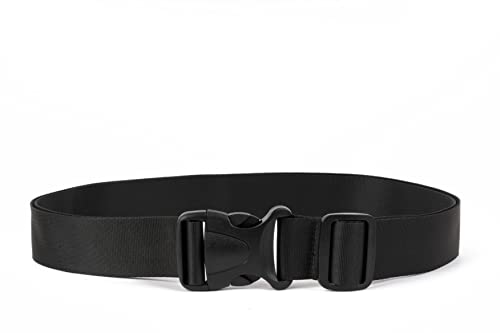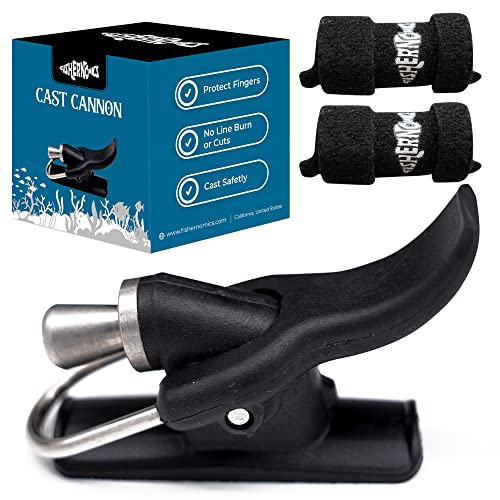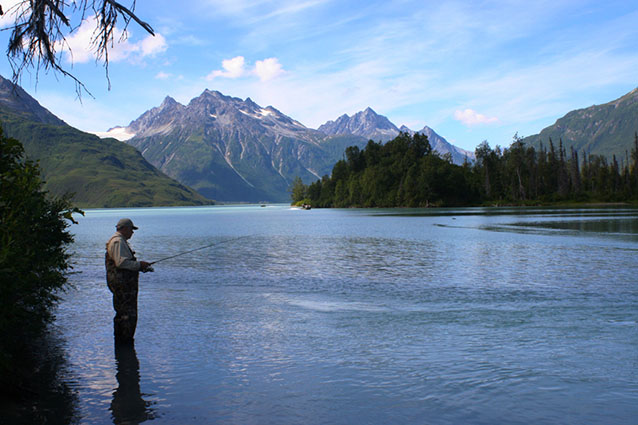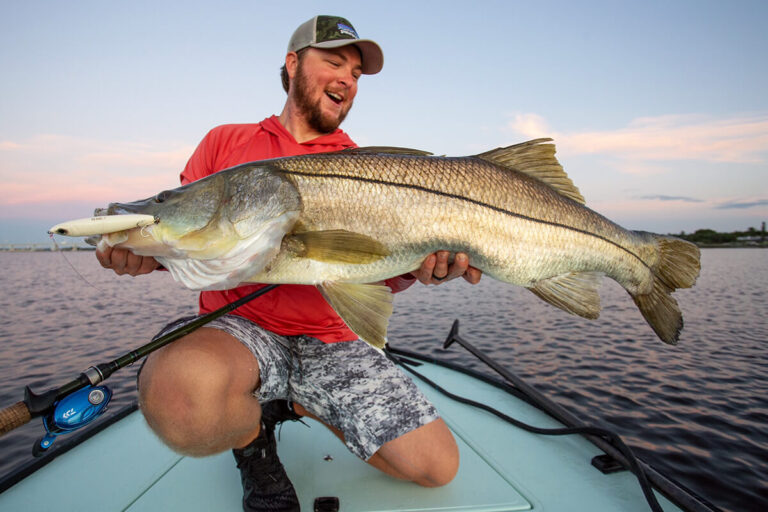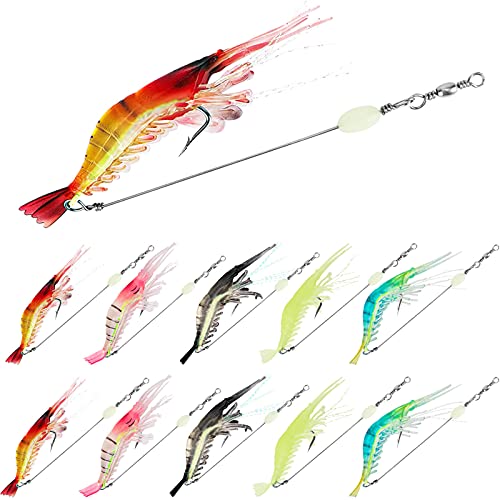To read the beach for surf fishing, observe the water movement and look for troughs, sandbars, and rips. Additionally, pay attention to any changes in wave size and shape.
This will help you identify where fish can be found and determine the best spot to cast your line. When fishing, always be aware of safety precautions and local regulations. Happy fishing! Surf fishing is a thrilling and rewarding activity that allows anglers to cast their lines from the shoreline and catch various species of fish.
However, success in surf fishing greatly relies on your ability to read the beach and understand its dynamics. By carefully observing the beach and taking note of key indicators, you can significantly increase your chances of landing a big catch. In this guide, we will delve into the essential techniques for reading the beach and finding the prime fishing spots. From identifying troughs and sandbars to recognizing rip currents and changes in wave patterns, this knowledge will empower you with the ability to pinpoint the best locations for casting your line. So, grab your fishing gear and let’s delve into the art of reading the beach for surf fishing!

Credit: interestedvideos.com
Introduction To Beach Reading
Beach reading is a crucial skill to master if you want to increase your chances of success in surf fishing. By understanding how to read the beach, you can locate the best spots to catch fish and maximize your catch.
In this section, we will explore the importance of beach reading for surf fishing success, the reading skills required, and how to utilize beach reading to locate fish and boost your fishing game.
Importance Of Beach Reading For Surf Fishing Success:
- Beach reading plays a vital role in determining where fish are most likely to be found. By understanding the characteristics of the beach, you can identify the optimal areas to cast your line.
- Being able to read the beach allows you to identify potential structures such as sandbars, troughs, and drop-offs. These structures naturally attract fish, providing you with ideal fishing grounds.
- By observing wave patterns, you can determine the direction of currents and how they interact with the beach. This knowledge helps you locate rip currents and eddies, where fish tend to congregate.
- The ability to read the beach also allows you to assess water clarity, which can impact fish behavior and feeding patterns. Clearer water might indicate better visibility for predators, increasing your chances of a successful catch.
Understanding The Reading Skills Required For Surf Fishing:
- Observational skills are crucial when it comes to beach reading for surf fishing. By paying attention to your surroundings, you can spot signs that indicate the presence of fish.
- Familiarize yourself with the different types of fish you are likely to encounter in your fishing area. Knowing their preferred habitat and behavior patterns will help you interpret the beach and identify potential hotspots.
- Developing an understanding of how tides and currents impact the beach is essential. Learn to recognize the changes in water movement and how they affect fish movements along the shoreline.
- Patience is a key reading skill required for surf fishing. It takes time to observe and interpret the beach accurately. Allow yourself the opportunity to become attuned to the environment and learn from each fishing experience.
Utilizing Beach Reading For Locating Fish And Maximizing Catch:
- One way to utilize beach reading for locating fish is by identifying areas of disturbance in the water. Look for disturbances caused by baitfish, birds diving, or fish breaking the surface, as these indicate feeding activity.
- Pay attention to the presence of structure such as rock formations, jetties, or piers. These structures provide shelter and food sources for fish, making them prime locations for casting your line.
- Use beach reading to locate areas where sandbars, troughs, or drop-offs intersect with strong currents. These intersections create eddies and rip currents, attracting fish looking for easy meals.
- Keep an eye out for areas of different water colors, as this can indicate changes in depth or the presence of underwater structures. These areas often hold fish and present opportunities for successful catches.
By honing your beach reading skills, you can transform your surf fishing experience. Understanding the significance of beach reading, the required reading skills, and how to utilize this knowledge for locating fish will enhance your ability to maximize your catch and reel in the big ones.
So grab your gear, head to the beach, and let the art of beach reading guide you to fishing success.
Analyzing Weather Patterns For Surf Fishing
Interpretation Of Weather Conditions For Ideal Surf Fishing
When planning a surf fishing trip, it is essential to analyze the weather conditions to increase your chances of a successful catch. By understanding and interpreting the weather patterns, you can determine the best times and locations for surf fishing.
Here are key points to consider:
- Wind direction and strength: The direction of the wind plays a crucial role in surf fishing. Prevailing onshore winds often lead to turbulent waters, which can attract baitfish and, in turn, larger game fish. Conversely, offshore winds can create calm conditions, making it harder to entice fish. It’s important to study wind forecasts and choose your fishing spot accordingly.
- Tidal movements: Tides greatly impact fishing opportunities. During incoming tides, baitfish and prey often move closer to shore, attracting predatory fish. On the other hand, outgoing tides may cause fish to move further offshore. By understanding the tide schedules, you can plan your fishing expedition strategically and increase your chances of landing a catch.
- Wave size and frequency: Waves not only affect the safety of fishing but also impact the fish’s behavior. Larger waves can stir up the seabed and create turbulence, attracting fish searching for food. However, if the waves are too strong, they might disperse the fish, making it harder to target them. Keep an eye on wave heights and frequencies to gauge the best conditions for surf fishing.
Identifying The Impact Of Wind, Tide, And Waves On Fishing
To excel in surf fishing, it’s crucial to understand how wind, tide, and waves directly influence the behavior and feeding patterns of fish. Here are the key impacts of each element:
- Wind: The direction and speed of the wind determine the water’s surface conditions, which affect the distribution of baitfish. Onshore winds push waves and currents towards the shore, stirring up food sources and attracting predatory fish. Assess the wind direction and its potential effect on wave and current patterns to find the most productive fishing spots.
- Tides: The natural ebb and flow of tides dramatically affect fish movements, feeding activity, and access to different areas. An incoming tide brings new food sources closer to the shore, prompting predatory fish to follow. Conversely, during an outgoing tide, fish may retreat to deeper waters. Plan your fishing excursions around tide changes for maximum opportunity.
- Waves: Waves provide a dynamic environment for fish, altering their behavior and feeding patterns. Fish often inhabit areas with suitable wave conditions that offer easy access to food and cover. Large waves can disorient or scatter fish, making it harder to target them. Observe wave size and its impact on the surf zone to identify the most favorable fishing conditions.
Utilizing Weather Forecasts To Plan Beach Reading Strategies
Weather forecasts provide invaluable information for planning your surf fishing expeditions. By interpreting the forecasts, you can make strategic decisions about timing and location. Here’s how you can utilize weather forecasts to optimize your beach reading strategies:
- Wave forecasts: Pay attention to wave heights and frequencies to determine the intensity of wave action. Larger waves can attract fish seeking stirred-up food sources, while calmer conditions might require adjusting your fishing techniques accordingly.
- Wind forecasts: Assess wind direction and strength to understand how it will influence wave patterns and water movement. Onshore winds often create favorable conditions for surf fishing, while offshore winds may result in calmer waters.
- Tide forecasts: Plan your fishing trips around tide changes to take advantage of the optimal feeding scenarios. Incoming and outgoing tides dictate the movement of baitfish and, subsequently, predatory species.
By incorporating weather forecasts into your surf fishing planning, you can increase your chances of success and make the most of your time on the beach. So, be sure to keep a keen eye on the weather conditions and adapt your strategy accordingly.
Happy fishing!
Reading The Beachscape For Optimal Fishing Spots
Surf fishing can be an exhilarating experience, but to maximize your chances of reeling in a big catch, it’s crucial to understand how to read the beachscape. By identifying key features, assessing sandbars and drop-offs, and understanding the influence of structure and current on fish behavior, you can pinpoint the most productive fishing spots.
Let’s dive deeper into these concepts to help you make the most of your surf fishing adventures.
Identifying Key Features Of A Productive Beachscape
When it comes to surf fishing, the beachscape holds valuable clues about where to find the fish. By observing the following key features, you can increase your chances of success:
- Beach structure: Take note of any irregularities in the beach, such as jetties, rock formations, or piers. These structures can create pockets of deeper water, which can attract fish seeking refuge or searching for food.
- Wave action: Pay attention to how the waves crash against the shore. Areas with more significant wave breaks can indicate the presence of sandbars or troughs, where fish tend to congregate.
- Baitfish activity: Look for signs of baitfish, such as seagulls diving or fish jumping out of the water. These baitfish are often pursued by larger predator fish, making these areas prime fishing spots.
- Water color and clarity: Clear or slightly murky water with a greenish tint usually indicates a healthy ecosystem, attracting a variety of fish species. Avoid fishing in areas with muddy or murky water, as it may indicate poor water quality.
Assessing Sandbars, Troughs, And Drop-Offs For Potential Fish-Rich Zones
Sandbars, troughs, and drop-offs are natural formations in the beachscape that can serve as fish-rich zones. Here’s what you need to know:
- Sandbars: These underwater ridges are formed by the movement of waves and currents. They can be identified by a break in wave patterns, as waves will often crest and then break again once they reach the sandbar. Fish often gather along sandbars, as they provide shelter and a source of food.
- Troughs: Located between sandbars, troughs are depressions in the ocean floor. Fish are attracted to troughs because they offer protection from strong waves and can create a concentration of baitfish.
- Drop-offs: Drop-offs occur where the ocean floor suddenly becomes deeper. These areas can be productive for surf fishing, as predator fish often lurk along the edge of drop-offs, waiting for prey to swim by.
Understanding The Influence Of Structure And Current On Fish Behavior
The presence of structure and the patterns of oceanic currents can significantly impact fish behavior. Consider the following factors:
- Structure: Fish are drawn to areas with structure as it offers protection, creates shade, and provides a habitat for baitfish. Keep an eye out for submerged rocks, underwater vegetation, or man-made structures like piers, as these can attract fish.
- Current: Fish tend to position themselves in areas where the current brings them an easy meal. Food tends to get trapped in eddies or carried along with the current, creating prime feeding spots. Look for areas where the current forms small pools or causes a noticeable disturbance on the water’s surface.
By honing your ability to read the beachscape and understand the significance of sandbars, troughs, drop-offs, structure, and current, you’ll be well on your way to discovering optimal fishing spots for your next surf fishing expedition. Remember, these are just guidelines, and it’s always important to exercise caution and check local regulations before casting your line.
Happy fishing!
Recognizing Baitfish Activity And Bird Activity
Reading the beach for surf fishing entails much more than simply casting your line into the water and hoping for the best. It requires a keen eye and the ability to read the signs that nature provides. Two important factors to consider when reading the beach for surf fishing are recognizing baitfish activity and bird activity.
By observing these indicators, you can increase your chances of a successful fishing outing. Let’s delve into each of these factors in more detail.
Observing Baitfish Behavior As A Key Indicator Of Potential Catch
When it comes to surf fishing, understanding baitfish behavior plays a crucial role in determining where the larger game fish may be lurking. Keep an eye out for the following key points:
- Presence of baitfish schools: Spotting schools of baitfish in the water is a promising sign that predators are also nearby. Baitfish tend to group together for protection, making them an attractive target for larger fish.
- Surface activity: Look for signs of disturbance on the water’s surface, such as splashes or ripples. This activity often indicates feeding frenzy and suggests the presence of hungry predators chasing after baitfish.
- Birds diving: If you see birds diving into the water, there’s a high chance that they are feasting on baitfish. Birds have exceptional eyesight and can spot schools of fish from above. Follow their lead, as they can lead you to the right fishing spot.
By observing the behavior of baitfish, you can gain valuable insights into the likely whereabouts of larger game fish. Keep these indicators in mind as you scan the surf for potential catch.
Understanding The Connection Between Bird Activity And Fish Presence
Birds and fish share a symbiotic relationship when it comes to feeding. A surge in bird activity often indicates the presence of fish in the area. Here are some key points to consider:
- Species of birds: Different bird species have different feeding habits. For instance, seagulls and terns are commonly seen near coastal areas and are usually drawn to baitfish feeding near the surface. Pelicans, on the other hand, tend to dive deeper into the water to catch larger fish. Understanding the behavior of various bird species can help you pinpoint specific types of fish in the area.
- Feeding patterns: Birds are adept at spotting fish from above and will plunge into the water to catch their prey. Pay attention to the frequency and location of these bird dives, as it can indicate where fish are more active in the surf.
- Bird formations: Birds often work together in feeding frenzies. If you observe a group of birds swooping and diving in a particular area, it is likely they are targeting a concentrated school of fish. Position yourself nearby to have a better chance of catching some of the action.
By utilizing bird activity as a guide, you can identify feeding areas and fish schools that may otherwise remain hidden beneath the surface. Take cues from the birds and adjust your fishing strategy accordingly.
Now that you have a better understanding of how to recognize baitfish behavior and interpret bird activity, you’re one step closer to becoming a master at reading the beach for surf fishing. Stay attuned to these indicators and let nature guide you to a successful day of fishing on the surf.
Decoding Wave Action For Fishing Success
When it comes to surf fishing, understanding wave action is key to maximize your chances of success. By analyzing wave height, direction, and frequency, you can determine where the fish are likely to be and adjust your fishing techniques accordingly.
In this section, we will explore the importance of decoding wave action and how it can help you catch more fish.
Analyzing Wave Height, Direction, And Frequency For Productive Fishing
To effectively read the beach for surf fishing, it is crucial to analyze wave height, direction, and frequency. Here are some key points to consider:
- Wave height: Pay attention to the size of the waves as it can indicate the depth of the water. Bigger waves often mean deeper water, while smaller waves may correspond to shallower areas.
- Wave direction: Observe the direction in which the waves are breaking. Different species of fish prefer different wave directions. For example, some fish are more active in waves breaking from left to right, while others prefer waves breaking from right to left.
- Wave frequency: Take note of the time between waves. Fish tend to feed more actively during periods of higher wave frequency. Analyzing wave frequency will help you determine the optimal time to cast your line.
Utilizing Wave Breaks And Rips To Locate Areas Of Predatory Fish Activity
Wave breaks and rips can be excellent indicators of areas where predatory fish are active. Consider the following points:
- Wave breaks: Look for areas where waves are breaking consistently. These breaking waves create turbulence, stirring up smaller fish and attracting bigger predators. Target your casts near these wave breaks to increase your chances of hooking a big fish.
- Rips: Rips are powerful currents that flow out to sea, often appearing as calm patches of water between breaking waves. These currents carry food and disoriented baitfish, making them ideal hunting grounds for predatory fish. Identify rips by observing areas where waves don’t break or where the water appears slightly discolored. Position yourself near a rip and cast your line to lure in feeding fish.
Adjusting Fishing Techniques Based On Wave Conditions
Adapting your fishing techniques to match the prevailing wave conditions can significantly improve your chances of catching fish. Consider the following tips:
- Casting distance: In rougher conditions with larger waves, casting further out into the deeper water may be more effective. In calmer conditions, concentrate your casts closer to the shore.
- Retrieve speed: Adjust the speed of your retrieve based on wave action. Faster retrieves can mimic fleeing baitfish in rougher conditions, while slower retrieves may be more effective in calmer waters.
- Bait selection: Match your bait selection to the prevalent wave conditions. In choppier waters, opt for larger, more visible baits. In calmer conditions, smaller and more subtle baits may be the better choice.
By decoding wave action and utilizing wave breaks and rips, you can strategically position yourself in areas where predatory fish are likely to be. Adjusting your fishing techniques based on wave conditions will increase your chances of success. So, the next time you head out for some surf fishing, don’t forget to read the beach and decode the waves for a rewarding fishing experience!
Reading Water Discoloration And Clarity
Interpreting Water Color And Clarity For Fishing Opportunities
When it comes to surf fishing, understanding the water color and clarity can make a significant impact on your fishing success. The appearance of the water can reveal valuable information about the feeding behavior of fish and help you identify areas where specific fish species might be present.
Below, we will delve into the key points of interpreting water color and clarity for fishing opportunities.
- Water color:
- Greenish or brownish water: This is often caused by sediment or algae, indicating lower visibility. It is ideal for fish species that rely on ambush tactics, such as flounder or striped bass.
- Clear or blue water: This indicates good visibility and is ideal for fish species that rely on visual hunting, such as bluefish or spanish mackerel.
- Water clarity:
- Murky or turbid water: This occurs when sediments or organic matter suspend in the water, reducing visibility. It can attract bottom-dwelling fish, like redfish or black drum, that rely on smell and vibration rather than sight.
- Clear or translucent water: This indicates excellent visibility and is preferred by fish species that rely on sight to locate prey, such as pompano or snook.
Understanding The Impact Of Water Transparency On Fish Feeding Behavior
The transparency of the water plays a crucial role in fish feeding behavior. Fish rely on their senses to find and catch prey, and water transparency determines the effectiveness of their hunting strategies. Let’s explore the key points related to water transparency and its impact on fish feeding behavior.
- Transparency and fish behavior:
- Clear water: Fish in clear water have better visibility and can efficiently locate and track their prey. They are more likely to rely on visual cues for hunting.
- Murky water: Fish in murky water have reduced visibility. They may rely more on their other senses, such as smell or vibration, to locate prey.
Identifying areas with ideal visibility or murky water for specific fish species
Different fish species have varying preferences when it comes to water visibility. Identifying areas with ideal visibility or murky water can enhance your chances of catching specific fish species. Consider the following key points while looking for fishing opportunities:
- Ideal visibility for specific fish species:
- Clear water: Look for areas with clear water if you are targeting species like spanish mackerel, bluefish, or permit, as they primarily rely on sight to locate their prey.
- Murky water: If you are targeting species like redfish, black drum, or catfish, search for areas with murky water, as these fish rely less on visibility and more on other senses.
Remember, each fish species has its own preferences and habits regarding water color and clarity. By understanding these nuances, you can effectively choose the right fishing spots and increase your chances of landing a big catch. So, make sure to read the beach and interpret water color and clarity for a successful surf fishing experience.
Observing Tidal Movements And Currents
Assessing Tidal Movements And Currents For Successful Fishing
To become a successful surf fisher, it is crucial to understand and observe the tidal movements and currents. By doing so, you can increase your chances of catching fish and have a more productive fishing experience. Here are some key points to consider:
- Understanding the tides: Tides are the rise and fall of sea levels caused by the gravitational forces of the moon and the sun. They occur twice a day and play a significant role in surf fishing. It is important to have a basic understanding of how tides work and how they affect the beach you plan to fish on.
- Types of tidal movements: Tidal movements can be categorized into two types: incoming tide (rising tide) and outgoing tide (falling tide). During an incoming tide, water moves towards the shore, bringing in food and attracting fish. On the other hand, during an outgoing tide, water moves away from the shore, creating less favorable fishing conditions.
- Observing currents: Currents are the continuous, flowing movements of water along the shore. They can be influenced by various factors such as tides, wind, and underwater topography. Understanding the different types of currents and how they interact with the beach can give you an advantage in finding the best spots for fishing.
- Identifying rip currents: Rip currents are strong, narrow channels of water that flow away from the shore. They can be hazardous for swimmers but are often beneficial for surf fishing. Fish tend to congregate near rip currents as they create a concentration of food and provide an easy passage for fish moving in and out of the surf zone.
By assessing tidal movements and currents, you can determine the optimal fishing times and locations. The key is to understand how tides affect the movement of fish and how they relate to different currents. Don’t be afraid to experiment and observe the beach before casting your line.
Happy fishing!
Conclusion
Understanding how to read the beach for surf fishing is pivotal to the success of your angling endeavors. By carefully observing the waves, tides, and currents, you can identify the prime spots where the fish are likely to gather. Taking note of the seabed composition and underwater structures can also provide valuable insights into where different species of fish may be found.
Additionally, paying attention to weather conditions, such as wind direction and cloud cover, can further enhance your fishing experience. Remember to adapt your fishing techniques and bait choices based on the changing conditions of the beach. By continuously honing your beach-reading skills and staying mindful of the various factors that influence the behavior of fish, you can significantly increase your chances of a fruitful fishing expedition.
So, embark on your next surf fishing adventure armed with the knowledge of how to read the beach, and let the ocean reveal its bountiful treasures.

